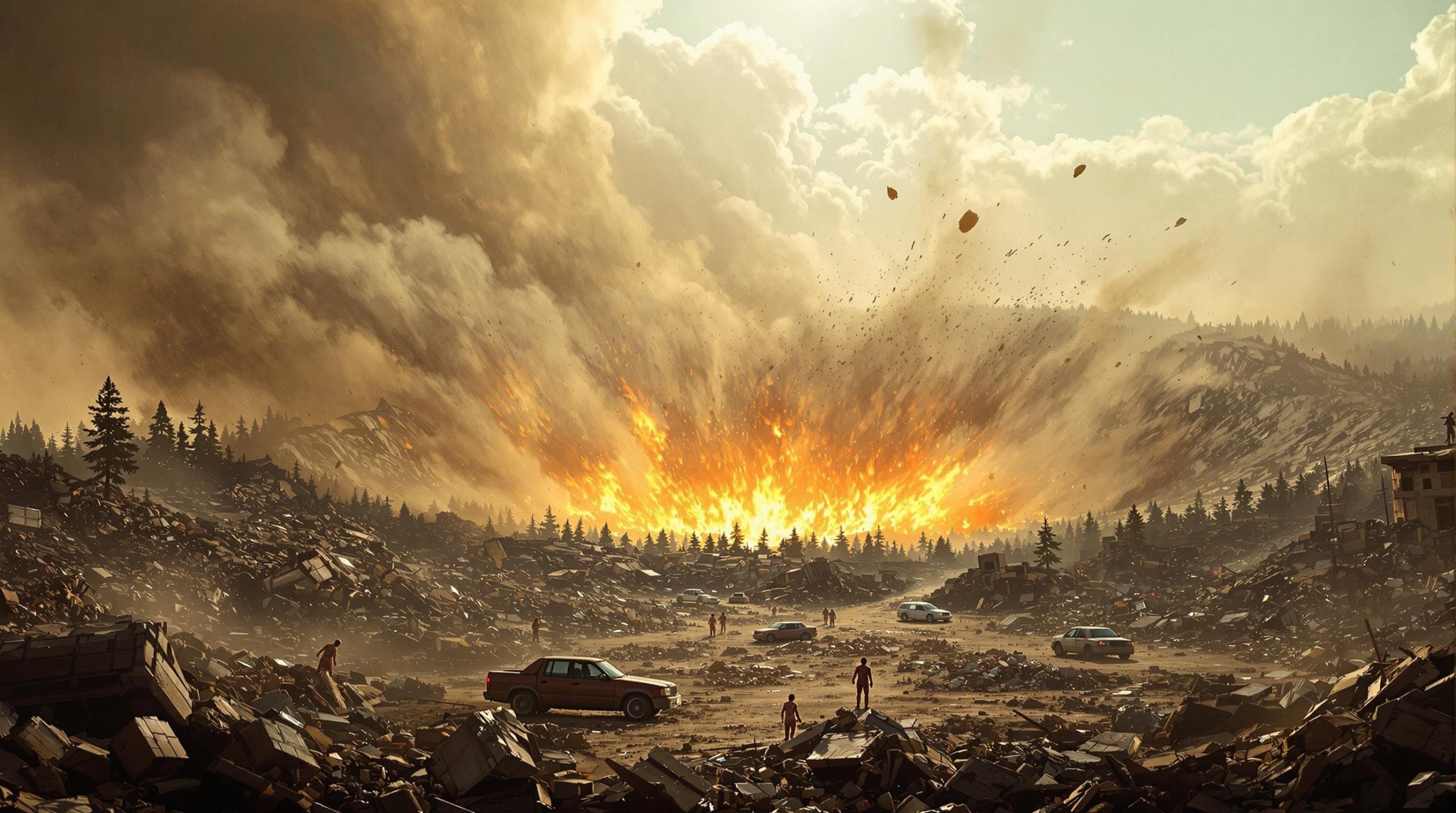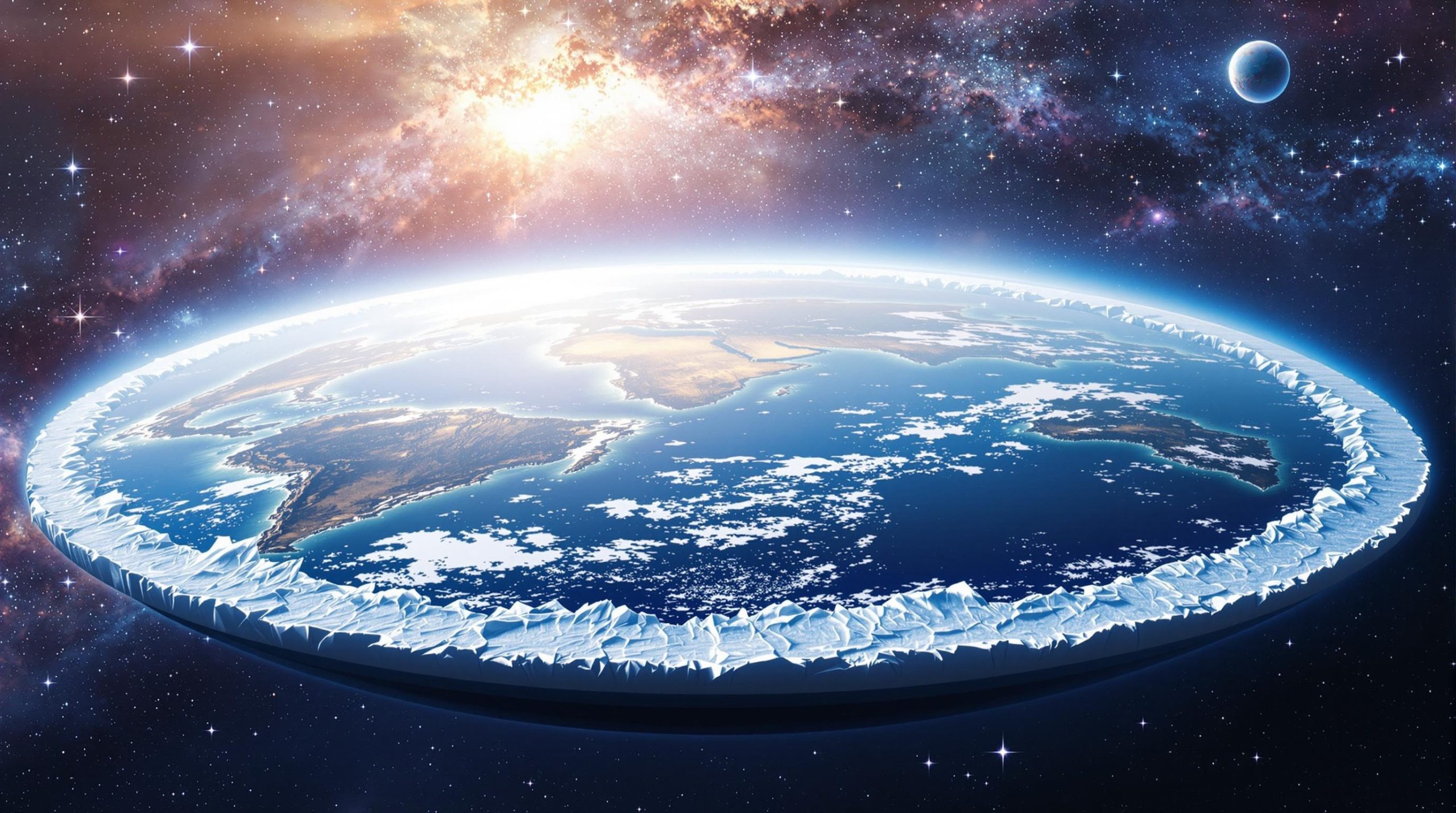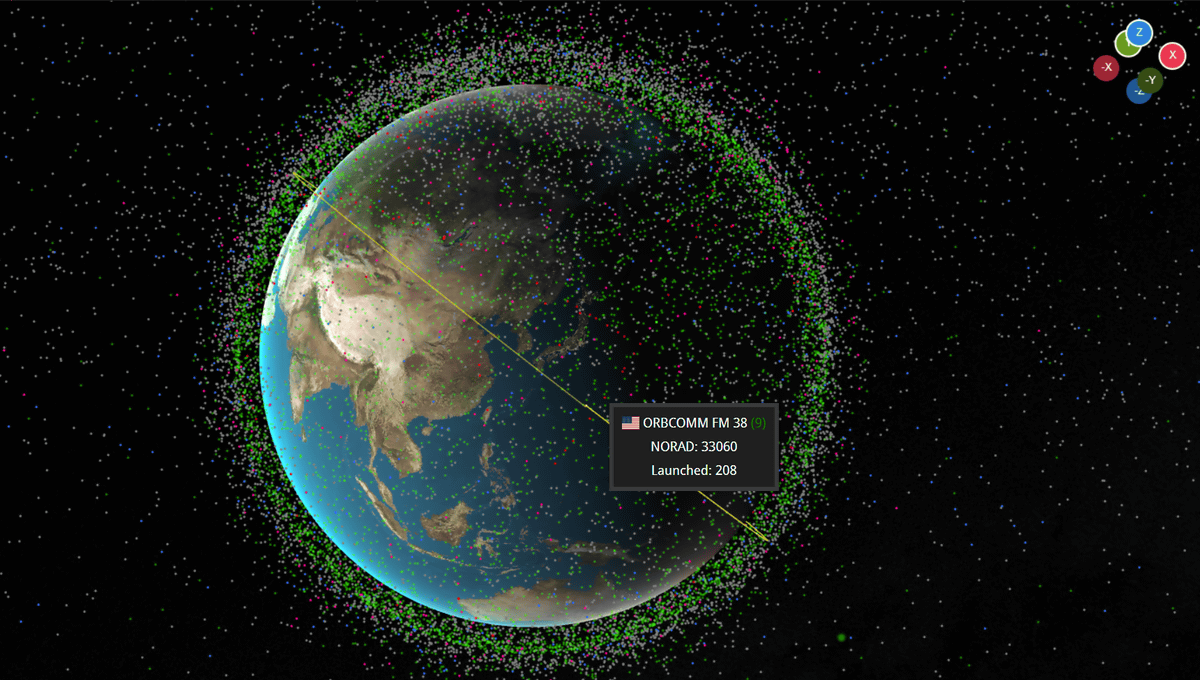Asteroids have impacted Earth for billions of years, shaping our planet’s history and even contributing to the extinction of species. But what if an asteroid were to hit Earth today? How devastating would it be? Could we survive?
In this article, we’ll explore what happens when an asteroid hits Earth, the potential consequences, and how scientists simulate these scenarios to prepare for future threats. stay with us
1. How Often Do Asteroid Hits Earth?
Asteroids are rocky bodies orbiting the Sun, mostly found in the Asteroid Belt between Mars and Jupiter. While most stay in stable orbits, some get nudged toward Earth.
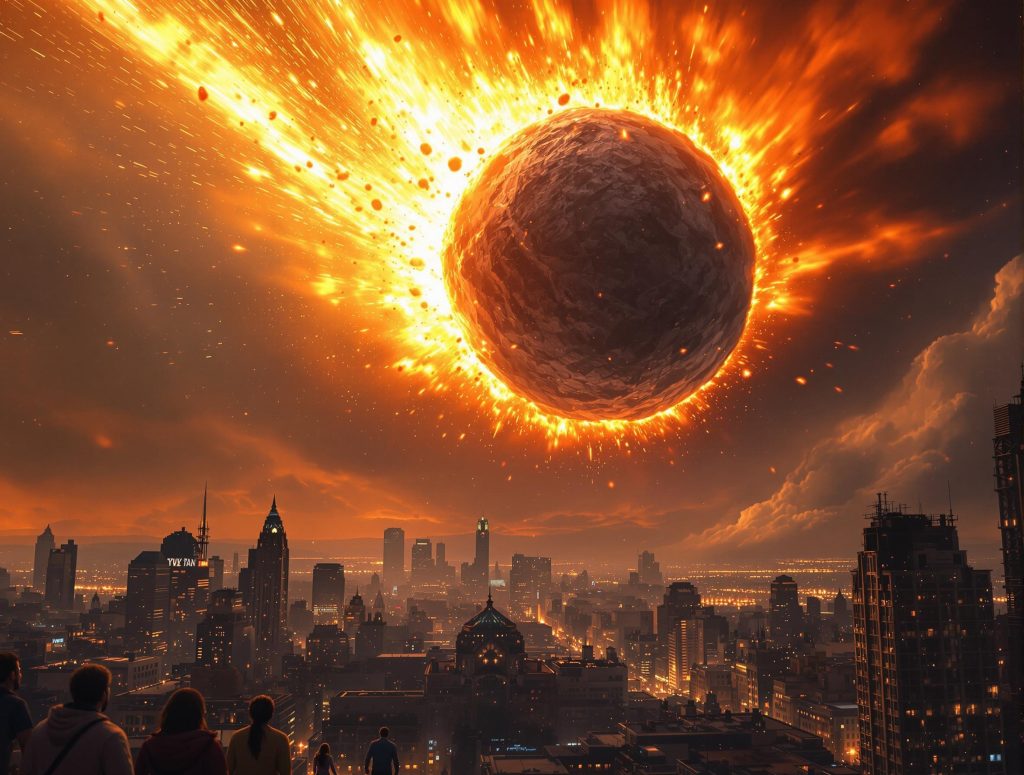
Types of Asteroid Impacts:
🔹 Small Meteoroids (1-10 meters): Burn up in the atmosphere, creating meteor showers.
🔹 Medium-Sized Asteroids (10-100 meters): Can cause local destruction, like the Tunguska event (1908).
🔹 Large Asteroids (100+ meters): Capable of devastating cities, continents, or even causing mass extinctions.
Frequency of Impacts
- Tiny meteoroids hit Earth daily, but they burn up harmlessly.
- City-sized asteroid impacts (50+ meters) occur once every few centuries.
- Extinction-level impacts (1+ km) are rare, happening once every 500,000 – 1 million years.
2. What Would Happen If a Large Asteroid Hits Earth?
Step 1: Atmospheric Entry
When an asteroid enters Earth’s atmosphere, it compresses air in front of it, generating extreme heat. Depending on its size and composition, it may burn up, explode in mid-air, or make it to the ground.
Example: The Chelyabinsk Meteor (2013)
- A 20-meter asteroid exploded 30 km above Russia, releasing energy equivalent to 30 Hiroshima bombs.
- The explosion shattered windows and injured 1,500 people, but no one died.
🔸 If the asteroid is large (100+ meters), it won’t burn up—it will hit the ground.
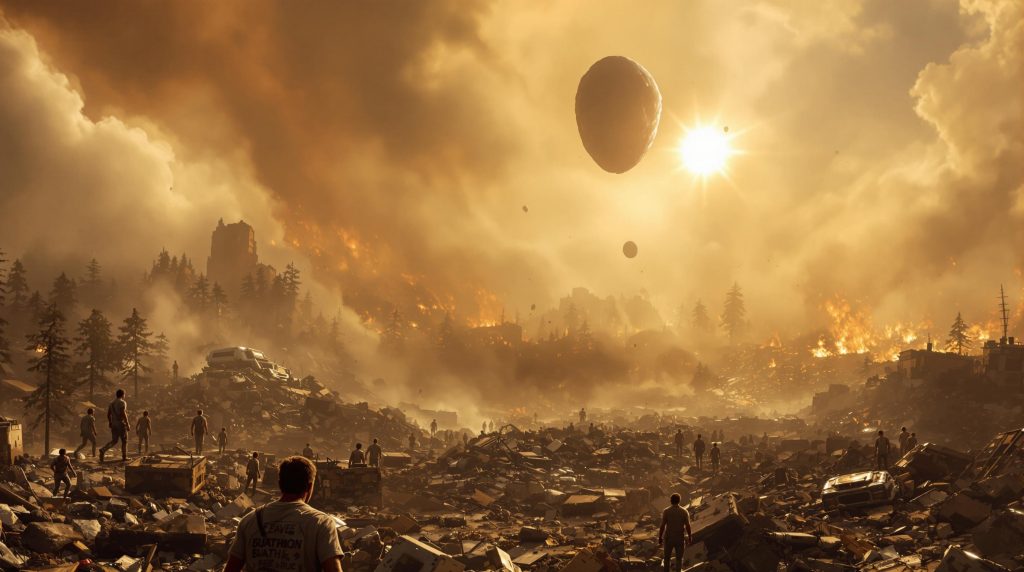
Step 2: Impact and Explosion
The impact speed of an asteroid is 12-72 km/s (kilometers per second)—faster than a bullet. When it collides with Earth, the energy released depends on its size, speed, and impact angle.
Effects Based on Asteroid Size:
📍 50-100 meters (City Destroyer)
- Impact releases energy hundreds of times more powerful than nuclear bombs.
- Causes a massive fireball, shockwave, and earthquake.
- Example: The Tunguska Event (1908) flattened 2,000 km² of forest in Siberia.
📍 500 meters (Regional Disaster)
- Forms a crater dozens of kilometers wide.
- Causes firestorms, earthquakes, and tsunamis if it lands in water.
- Would devastate an entire country.
📍 1+ Kilometer (Global Catastrophe)
- The impact ejects billions of tons of dust into the atmosphere, blocking sunlight.
- Causes wildfires, acid rain, and extreme climate changes.
- Similar to the Chicxulub impact (66 million years ago) that led to the dinosaur extinction.
📍 10+ Kilometer (Mass Extinction Event)
- Unleashes energy millions of times greater than nuclear bombs.
- Causes worldwide firestorms, tsunamis, earthquakes, and global cooling.
- Could wipe out most life on Earth.
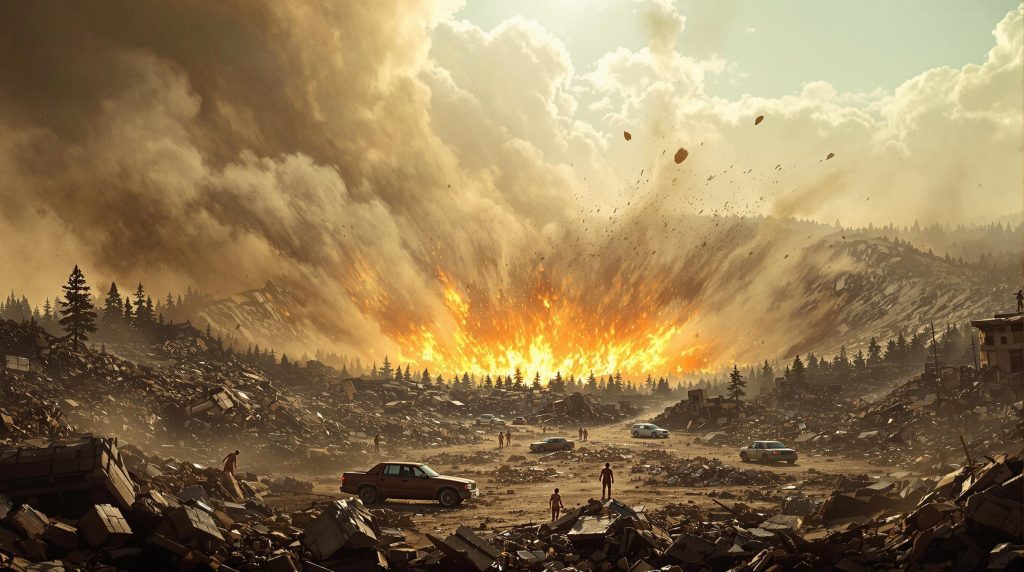
3. Simulating an Asteroid Impact
Scientists use computer simulations to model what would happen if an asteroid hit Earth. These simulations help us:
✅ Understand how different asteroid sizes impact Earth.
✅ Predict which areas would suffer the most damage.
✅ Develop asteroid deflection strategies.
Example: NASA’s Asteroid Impact Simulation
NASA and the European Space Agency (ESA) run regular “Planetary Defense Exercises”, where experts simulate asteroid impact scenarios and plan global responses.
Notable Simulations:
🚀 Hypothetical 2021 Simulation
- Scientists simulated a 460-foot (140-meter) asteroid impact on Europe.
- Conclusion: No existing technology could stop it in time.
- Result: Evacuation was the only option.
🛰 DART Mission (2022)
- NASA’s DART (Double Asteroid Redirection Test) successfully altered the trajectory of an asteroid.
- Proved we can deflect asteroids if given enough time.
You can Read More about : What is asteroid belt (Astro belt) ? facts and information
Want to Try It Yourself?
🌍 NASA’s Asteroid Impact Simulator
- https://cneos.jpl.nasa.gov/sentry/
- Allows users to simulate asteroid impacts and see their effects!
4. Can We Prevent an Asteroid Impact?
Scientists have several planetary defense strategies in development:
🚀 1. Deflection Missions (DART, Solar Sails, Gravity Tractors)
- Idea: Change an asteroid’s trajectory years before impact.
- Tested: NASA’s DART mission successfully nudged an asteroid in 2022.
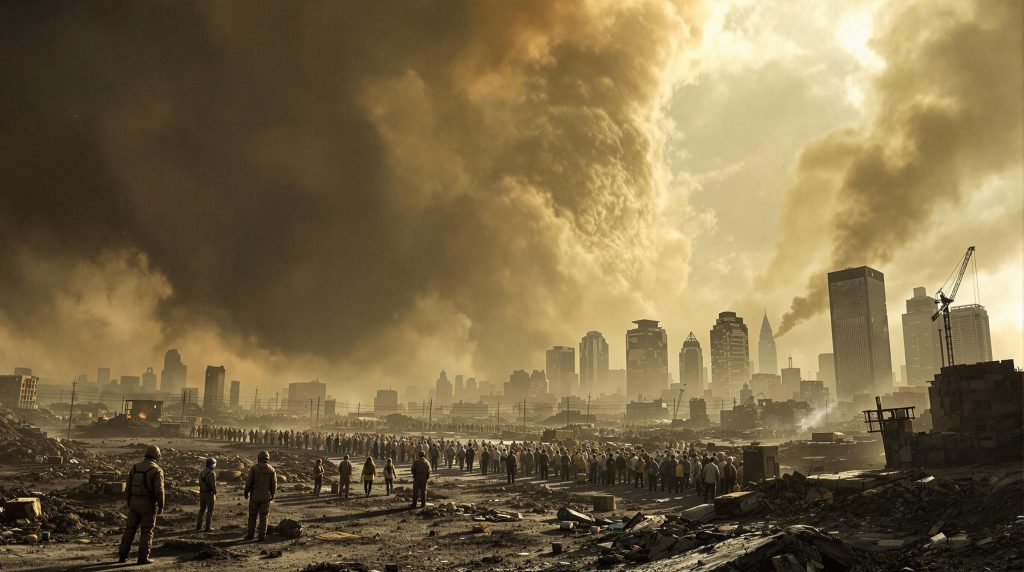
💥 2. Nuclear Detonation
- Idea: Explode a nuclear device near an asteroid to push it off course.
- Problem: Risk of breaking the asteroid into multiple dangerous fragments.
🔧 3. Laser Ablation & Kinetic Impacts
- Idea: Use high-powered lasers or a fast-moving spacecraft to vaporize part of an asteroid and alter its path.
- Pros: No risk of fragmentation.
- Cons: Requires advanced space infrastructure.
✈ 4. Evacuation & Disaster Preparedness
- If a city-sized asteroid cannot be stopped, governments would focus on evacuating affected regions.
- This was the only viable option in NASA’s 2021 simulation.
5. Has an Asteroid Impacted Earth Before?
🌍 The Chicxulub Impact (66 Million Years Ago)
- A 10 km-wide asteroid struck Mexico’s Yucatán Peninsula.
- Created a 180 km-wide crater and caused a global firestorm, tsunamis, and mass extinction.
- Wiped out 75% of life, including the dinosaurs.
🪨 Tunguska Event (1908, Siberia)
- A 50-meter asteroid exploded in mid-air, flattening 2,000 km² of forest.
- Estimated 1,000 times stronger than the Hiroshima bomb.
🚀 Chelyabinsk Meteor (2013, Russia)
- A 20-meter asteroid exploded in the sky, injuring 1,500 people.
- Reminded the world that asteroid threats are real and unpredictable.
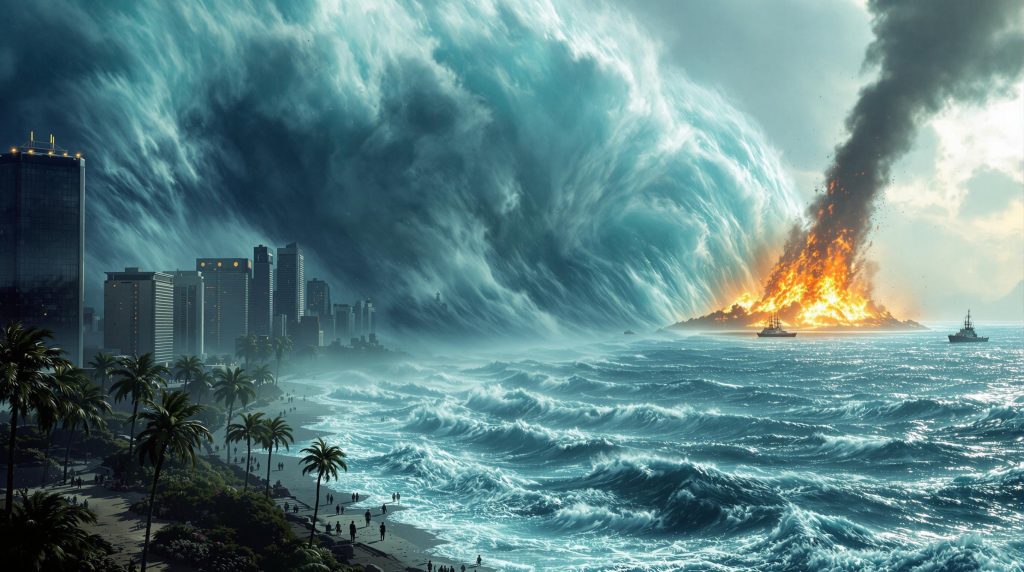
6. Conclusion: How Worried Should We Be?
While asteroid impacts are inevitable, large impacts are rare. However, the risk is significant enough that NASA, ESA, and other space agencies are actively working on planetary defense strategies.
Key Takeaways:
✅ Small asteroids hit Earth daily but burn up in the atmosphere.
✅ City-sized asteroids (50+ meters) could cause regional destruction.
✅ Large asteroids (1+ km) could trigger global disasters.
✅ Simulations and deflection missions help us prepare for future threats.
✅ NASA’s DART mission (2022) proved we can alter an asteroid’s course.
🚀 Will humans be able to prevent a future asteroid disaster? With advancing technology, the answer may soon be YES!
References
NASA – Planetary Defense Coordination Office
https://www.nasa.gov/planetarydefense
Details NASA’s efforts to detect and prevent asteroid impacts.
European Space Agency (ESA) – Near-Earth Object Program
https://www.esa.int/Safety_Security/Near-Earth_Objects
ESA’s tracking and deflection plans for hazardous asteroids.
Asteroid Collision Simulator – Purdue University
https://impact.ese.ic.ac.uk/ImpactEarth
An interactive tool to simulate asteroid impacts on Earth.

